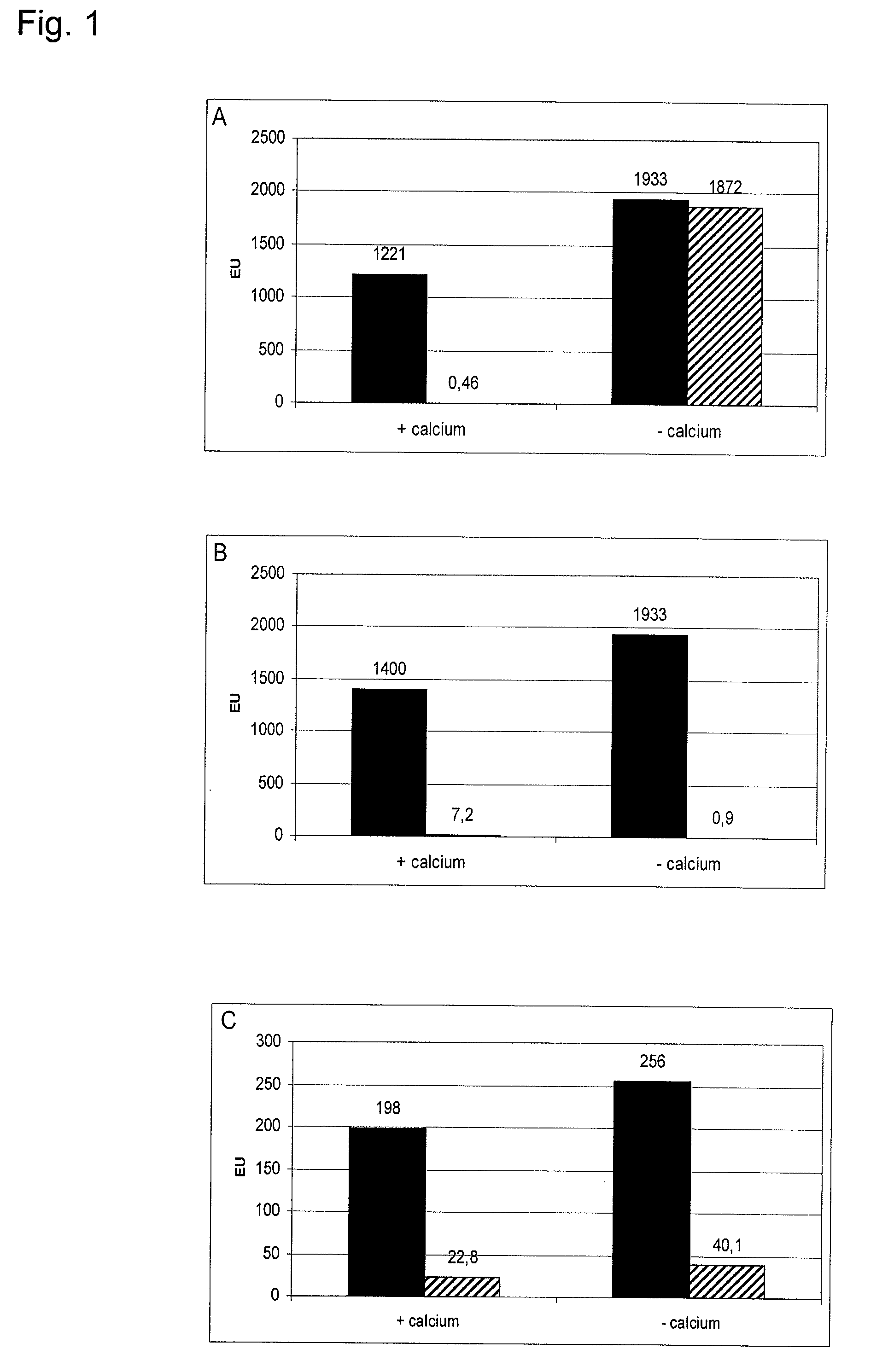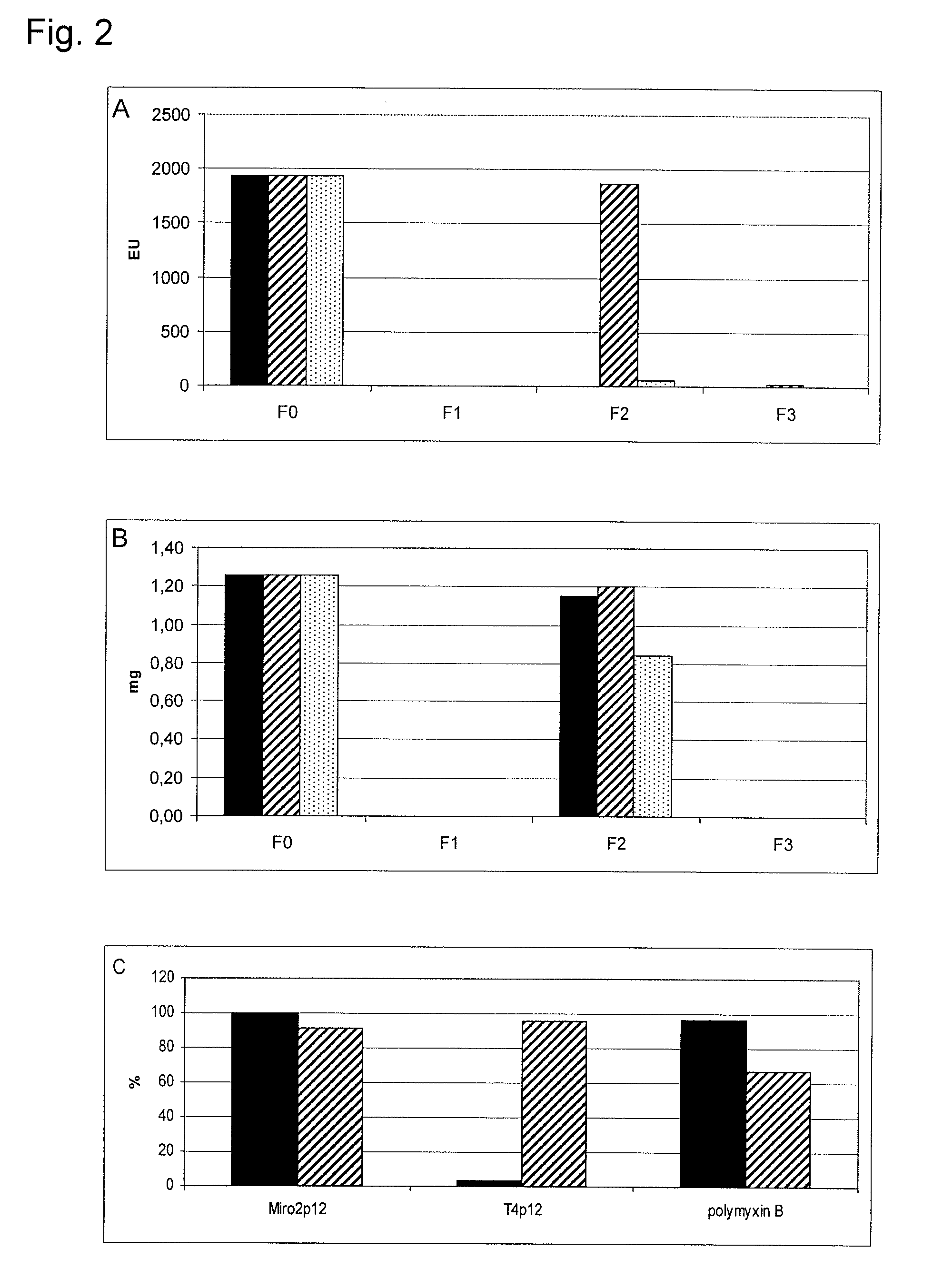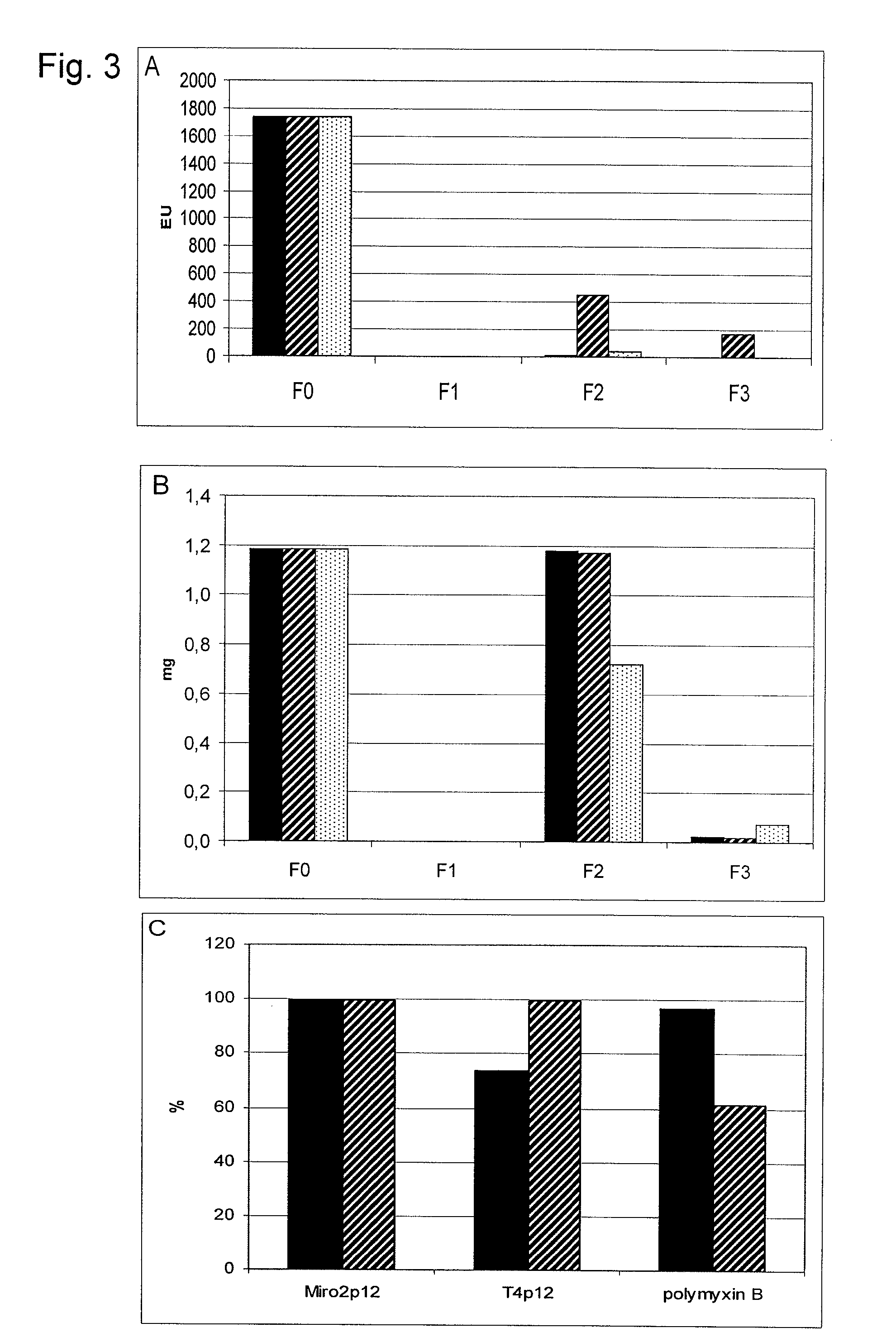Method for detecting and removing endotoxin
a technology of endotoxin and endotoxin, which is applied in the field of bacteriaophage tail proteins, can solve the problems of high mortality rate, endotoxin presents a problem, and inducing the death of patients
- Summary
- Abstract
- Description
- Claims
- Application Information
AI Technical Summary
Benefits of technology
Problems solved by technology
Method used
Image
Examples
example 1
Effect of Calcium on the Endotoxin Binding of T4p12, N-Strep-Miro2p12 and N-Strep-Aeh1p12
[0141]The short tail fibre proteins T4p12, N-Strep-Miro2p12 and N-Strep-Aeh1p12 were immobilized to NHS activated sepharose 4 Fast Flow (Amersham Biosciences) according to the instruction of the manufacturer and afterwards the binding of endotoxin to said sepharoses was examined. For that purpose columns were cast, a solution with endotoxin was applied onto said columns and the flow-through was collected. The endotoxin content in the application and in the flow-through was determined via LAL-test (kinetic chromogenic LAL-test, Cambrex). The columns had volumes of 1 ml for T4p12 and N-Strep-Miro2p12 and 0.2 ml for N-Strep Aeh1p12. Each 1 ml of a BSA solution (1 mg / ml) was applied onto T4p12 and N-Strep-Miro2p12 columns and 0.2 ml of a buffer solution to N-Strep-Aeh1p12 column. The applied solutions were all studded with endotoxin of E. coli O55:B5 (approximately 1000 EU / ml). To see the effect of ...
example 2
[0143]1. Construction of Miro1, Miro2 and Effe04 with N-terminal Strep-tag: Via PCR the nucleotide sequence for the Strep-tag was added to the 5′ end of the Miro2 gene (U.S. Pat. No. 5,506,121). Therefore a primer for the 5′ end of the Miro2 gene was constructed (5′-GAA GGA ACT AGT CAT ATG GCT AGC TGG AGC CAC CCG CAG TTC GAA AAA GGC GCC GCC CAG AAT AAC TAT AAT CAC-3′; SEQ ID NO:15), which comprises the nucleotide sequence of the Strep-tag at its 5′ end (cursive in the sequence) and a restriction recognition side (NdeI, underlined in the sequence) in that way, that the gene can be inserted into the right reading frame of the expression plasmid. A primer for the 3′ end of the Miro2p12 gene (5′-CG GGA TCC TCC TTA CGG TCT ATT TGT ACA-3′; SEQ ID NO:16) was constructed, which adds a BamHI restriction recognition side behind the Miro2p12 gene (underlined in the sequence). The PCR was carried out with 35 cycles (15 s 94° C., 15 s 51° C., 1 min 74° C.). The PCR preparation was restricted wit...
example 3
[0147]Purification of N-Strep-Miro2 protein: The E. coli strain BL21(DE3) was raised with the plasmid pNS-Miro2 in a 2 l agitation culture (LB-medium with ampicillin, 100 μg / ml) until a OD600 of 0.5-0.7 at 37° C. and the expression of the N-Strep-Miro2 protein was induced by the addition of 1 mM IPTG (isopropyl-β-thiogalactopyranoside). After incubation at 37° C. for 4 h the cells were harvested. Harvest cells of 10 l culture were sustained into 50 ml 10 mM sodium phosphate, pH 8.0, 2 mM MgCl2, 150 mM NaCl, disrupted by a French-Press treatment (20,000 psi) for three times and afterwards centrifuged for 30 min at 15,000 rpm (SS34). After washing for two times in the same buffer, the N-Strep-Miro2 protein was extracted from the pellet by stirring for 30 min in 10 mM Tris HCl pH 8.0, 150 mM NaCl, 1 M urea, the preparation was centrifuged for 30 min at 15,000 rpm (SS34) and the released N-Strep-Miro2 was embedded in the supernatant at 4° C. The extraction was repeated twice. The pooled...
PUM
| Property | Measurement | Unit |
|---|---|---|
| ionic strength | aaaaa | aaaaa |
| volumes | aaaaa | aaaaa |
| volumes | aaaaa | aaaaa |
Abstract
Description
Claims
Application Information
 Login to View More
Login to View More - R&D
- Intellectual Property
- Life Sciences
- Materials
- Tech Scout
- Unparalleled Data Quality
- Higher Quality Content
- 60% Fewer Hallucinations
Browse by: Latest US Patents, China's latest patents, Technical Efficacy Thesaurus, Application Domain, Technology Topic, Popular Technical Reports.
© 2025 PatSnap. All rights reserved.Legal|Privacy policy|Modern Slavery Act Transparency Statement|Sitemap|About US| Contact US: help@patsnap.com



